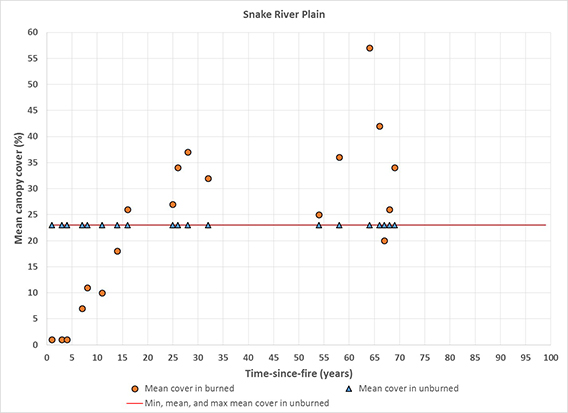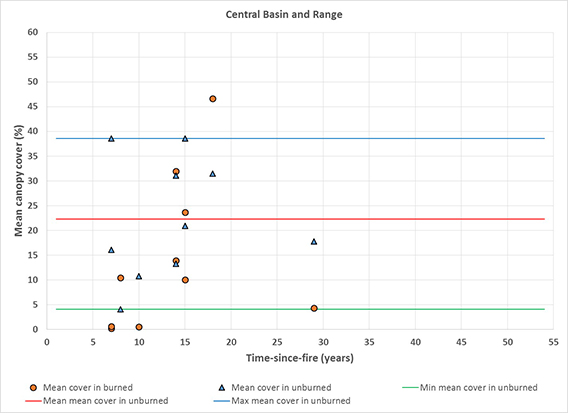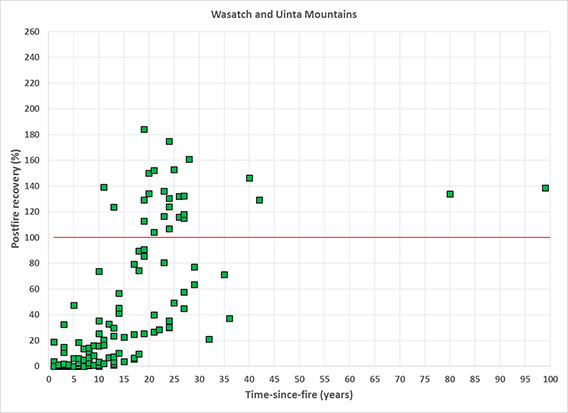| FEIS Home Page |
| Column I—Mean canopy cover on burned sites versus time-since-fire (circles) and paired mean canopy cover on nearby, unburned sites (triangles) in eight ecoregions. Lines show the minimum, mean, and maximum values of mean canopy cover in unburned sites used to represent full recovery in our analyses. | Column II—Ratio of burned to unburned (or prefire) mountain big sagebrush canopy cover (i.e., "postfire recovery") versus time-since-fire in eight ecoregions. The red line shows 100% recovery: Squares above the red line are considered fully recovered, those below are not. |
| I) Canopy cover over time | II) Recovery over time |
| a) Snake River Plain | |
 |
 |
| b) Middle Rockies | |
 |
 |
| c) Wyoming Basin | |
 |
 |
| d) Eastern Cascades Slopes and Foothills | |
 |
 |
| e) Northern Basin and Range | |
 |
 |
| f) Central Basin and Range | |
 |
 |
| g) Wasatch and Uinta Mountains | |
 |
 |
| h) Colorado Plateaus | |
 |
 |
| aEcoregions are based on the EPA's Level III ecoregion classifications for the conterminous United States [475]. Data on mountain big sagebrush canopy cover and postfire recovery comes from these ecoregions and sources a) Snake River Plain [432], b) Middle Rockies [2,3,4,5,206,280,349,398,654,671,681], c) Wyoming Basin [686], d) Eastern Cascades Slopes and Foothills [246,767], e) Northern Basin and Range [169,272,391,767], f) Central Basin and Range [459], g) Wasatch and Uinta Mountains [230,459], and h) Colorado Plateaus [459]. | |